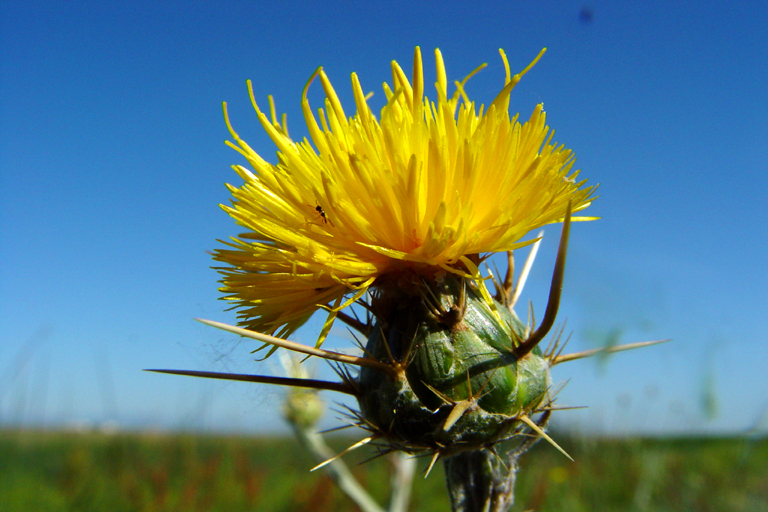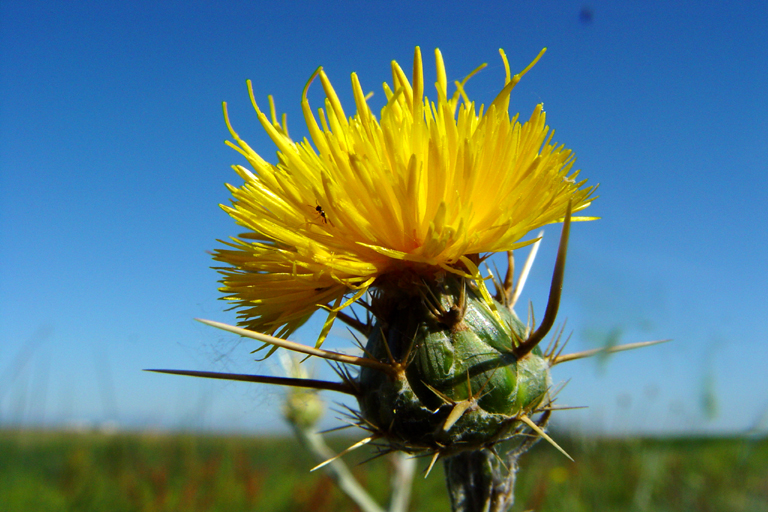
National parks make up about 84.6 million acres of U.S. soil. (Wallechinsky 2016) The Channel Islands are just five islands off the coast of California and they are one of the national parks here in the United States. There are many different invasive species in the Channel Islands. One plant in particular is the Centaurea solstitialis, or Yellow Starthistle. It is originally from Europe and is part of the daisy family.
Yellow Starthistle is an invasive species, so it has overtook a lot of the land which now threatens the native plants and animals from the islands. Currently it inhabits the Santa Cruz Islands, where it was discovered in 1930, and also the Santa Rosa Islands. Other than taking over the land and trying to destroy the ecosystem there, the Yellow Starthistle proves itself to be even more dangerous. It causes the property value of where it is located to go down because of its hazardous properties. Another thing very worrisome about Yellow Starthistle is that it is very toxic to horses (United States 2016).
There are various ways to identify a Yellow Starthistle. It almost looks like a yellow Dandelion except the Yellow Starthistle has thistles surrounding right under the yellow flower, hence the name. The stem has a grey, green, or blue tint and varies between six inches and five feet long. Sometimes, there is a cottony wool over the stem that would give it a white appearance.
This invasive species lives almost all year round since it is located in the Channel Islands. The rainy season in California is the fall to the spring, so that is when these seeds germinate. Also, the seeds begin germinating about a year after dispersal, but can take up to three years. Although the stem can be visible up to five feet, the roots go about three feet underground, so sometimes more than half of the plant is in the soil. This would make the plant very hard to get rid of (DiTomaso 2015).
Works Cited:
DiTomaso, J. 2015 How to Manage Pests: Pests in Gardens and Landscapes http://ipm.ucanr.edu/PMG/PESTNOTES/pn7402.html 16 Oct. 2016.
Skahill, J. Fall 2003. The Biogeography of Yellow Starthistle (Centaurea solstitialis) http://online.sfsu.edu/bholzman/courses/Fall%2003%20project/yst.htm 16 Oct. 2016.
United States National Park Service. 2016. Channel Islands: Terrestrial Invasive Plants https://www.nps.gov/chis/learn/nature/terrestrial-invasive.htm 16 Oct. 2016.
Wallechinsky, D. 2016. AllGov- Departments: National Park Service http://www.allgov.com/departments/department-of-the-interior/national-park-service?agencyid=7251 16 Oct. 2016.

Love it! Great job, proud of you!
LikeLike